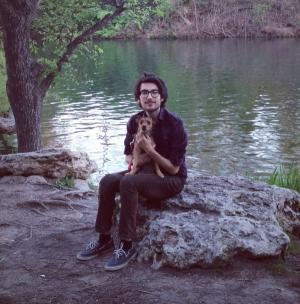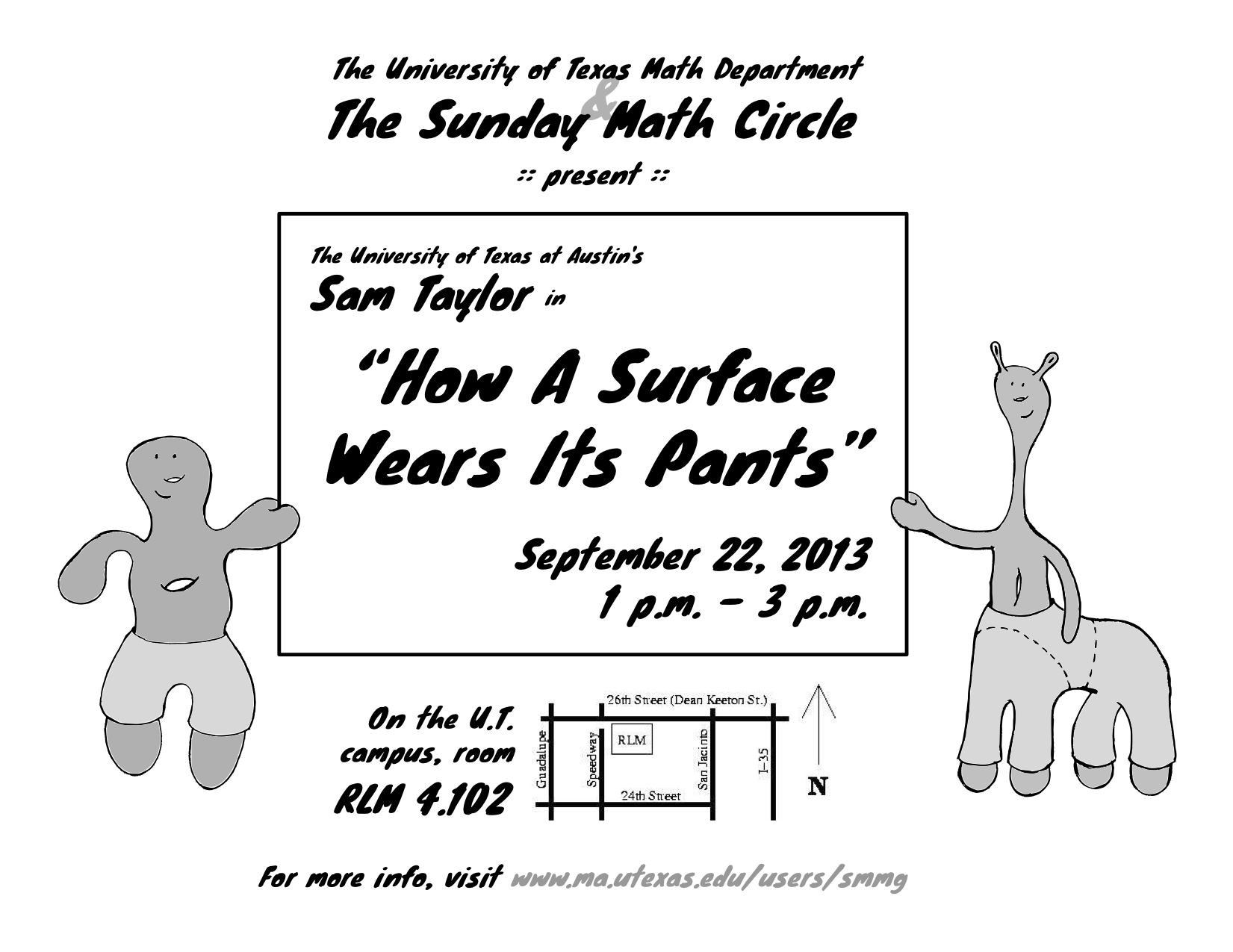SMMG

"How a Surface Wears Its Pants"
featuring Sam Taylor
From close up, the Earth looks flat—so flat that it fooled us for thousands of years. It was only in the last century that we were able to step out into space and look at the Earth as a whole, revealing a very different geometry. On September 22, 2013, UT's Sam Taylor led us into the mind-bending world of surfaces: shapes that, like the spherical crust of the Earth, look perfectly flat on small scales.
In order to see how surfaces are special, we started out by coming up with examples of shapes that aren't surfaces. Along the way, we discovered lots of features that surfaces can't have, including edges, sharp corners, and seams where multiple flat pieces come together. Then we found our first example of a surface that wasn't a plane or a sphere: the shape of the crust of a doughnut, called a torus. By thinking about doughnuts with multiple holes, we produced an infinite family of surfaces.
Next, we learned how to build surfaces by gluing together shapes with edges. This gave us a systematic way to invent new surfaces, as well as a way to help visualize surfaces we already had. We saw that almost all of the surfaces we knew about so far could be built from just one kind of building block, called a pair of pants. We also discovered that some surfaces could be built from pairs of pants in several different ways. Finally, we learned about a pair of geometric maneuvers, called pants moves, that we could use to switch between different ways of building the same surfaces out of pants. Thanks to some enthusiastic students and parents who'd brought extra pants from home, we even got to try out the pants moves on some actual pairs of pants!

